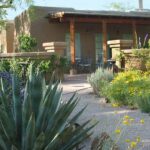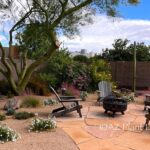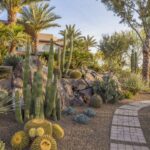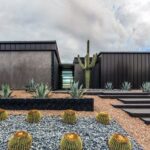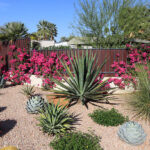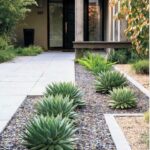Desert landscaping is a popular choice for homeowners in arid regions, as it offers a low-maintenance and water-efficient alternative to traditional green lawns and gardens. One of the key principles of desert landscaping is the use of native plants that are well adapted to hot, dry conditions. These plants require minimal watering and maintenance, making them an ideal choice for homeowners looking to conserve water and reduce their environmental impact.
In addition to native plants, desert landscaping often incorporates rocks, gravel, and other hardscape elements to create a visually appealing and sustainable outdoor space. These features help to conserve water by reducing the need for irrigation, while also providing structure and texture to the landscape. By using a variety of materials and textures, homeowners can create a beautiful and diverse desert garden that is both functional and aesthetically pleasing.
Another benefit of desert landscaping is its ability to attract wildlife and promote biodiversity. Native plants are well suited to the desert environment and provide food and shelter for a variety of birds, insects, and other wildlife. By creating a habitat for native species, homeowners can help to support local ecosystems and contribute to the overall health of the environment.
Desert landscaping also offers numerous practical benefits for homeowners, including reduced water bills and lower maintenance costs. By using drought-tolerant plants and efficient irrigation systems, homeowners can significantly reduce their water usage and save money on watering and maintenance. Additionally, the low-maintenance nature of desert landscaping means less time and effort spent on upkeep, allowing homeowners to spend more time enjoying their outdoor space.
Despite its many benefits, desert landscaping does require some planning and knowledge to be successful. It is important to choose plants that are well adapted to the specific climate and soil conditions of the region, as well as to consider factors such as sun exposure and drainage when designing a desert garden. Consulting with a professional landscaper or horticulturist can help homeowners make informed decisions and create a thriving desert landscape that meets their needs and preferences.
Ultimately, desert landscaping offers a sustainable and environmentally friendly alternative to traditional landscaping practices. By using native plants and hardscape elements to create a beautiful and functional outdoor space, homeowners can conserve water, support local wildlife, and reduce their environmental impact. With careful planning and design, desert landscaping can be a rewarding and cost-effective way to create a unique and sustainable outdoor environment.

